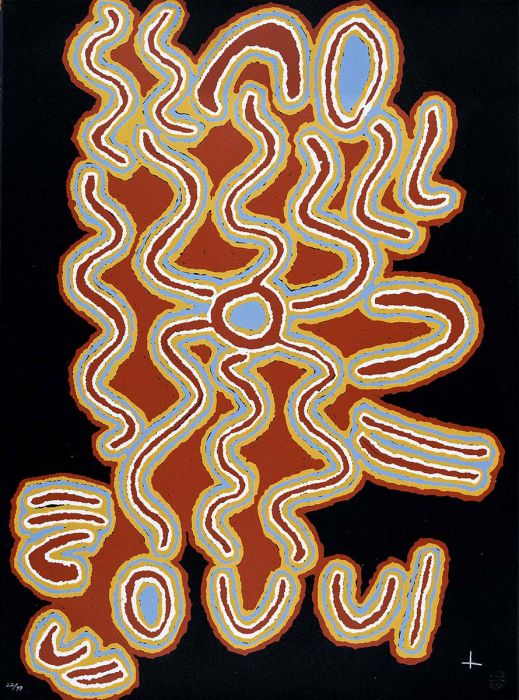- Yilpinji
- >
- Love Story - Judy Napangardi Watson
Love Story - Judy Napangardi Watson
Love Story - Judy Napangardi Watson
Printed on Paper, 56 x 76 cm
$500
At Mina Mina women were living and having women's ceremony also at Warlpalpa (soakage water). The Napangardi and Napurrurla women were weaving Jirnjirla (white feather) around their head. The old man named Jalkirjarlki Jakamarra was watching them from his country Munyuparnti-parnti, near Mt Dennison. So he went up to them and took them towards the east. Jakamarra Looks them to a place called Yalankirri that is in Alawarri Country. The Jakamarra was singing love songs for them and so he left them at Yalankirri, while he was singing he made the ladies put their hands behind their backs. The ladies stopped at this place called Yalankirri forever and that Jakamarra, Jalkijarlk, came back to Munyuparnti-parnti. Before that Jakamarra man took the women East the women made a big wee at Munyuparnti-parnti and they made a hole in the grounding this hole is called Munypartni-partni.
‘Love Magic’ does exist in traditionally oriented Indigenous Australian communities in a variety of different ways, including visual art, ceremony, lengthy narratives, song and dance, it’s purpose seems to be widely misconstrued. Given that it is an umbrella translation for terminology from many different Indigenous Australian languages.
This artwork is part of a series using the Warlpiri and Kukatja word, Yilpinji, untranslated, rather than the misleading English hocus locus ‘love magic’. Why do indigenous societies practise Yilpinji. In traditional Australian life, there was a rigid system of arranged or ‘promised’ marriages, which to some extent continues to this day. Essentially marriage was an arrangement transacted between families, normally excluding what we now understand as ‘romance’.
’Yilpingi’ or socially authorised adulterous liaisons, which occur within a strict framework of rules, gives scope for the expression of romantic feelings and sexual love, without threatening the marriage system.
However it is quite clear that there is an inherent danger in Yilpinji-mediated relationships. Such unions could easily lurch out of control and therefore threaten normative marriage practises and rules. Hence the Yilpinji Dreaming narratives about illicit, transgressive love affairs, which as warnings and cautionary tales.

